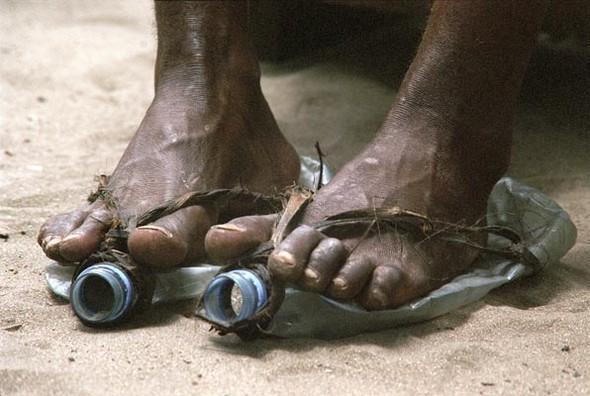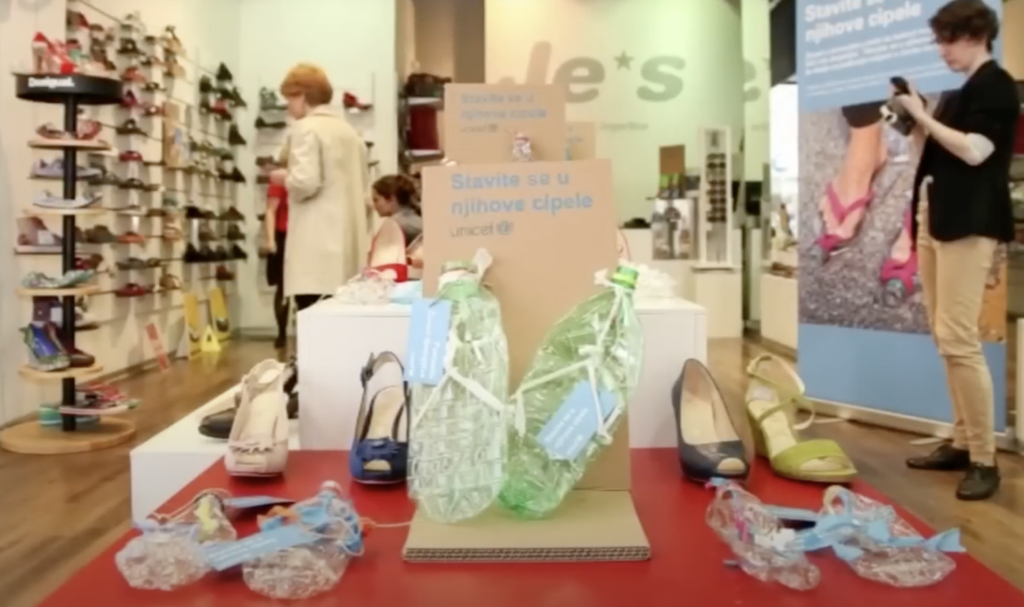During this semester I have gained a lot of insight about the footwear industry and this blog post will be a summary of what I have learned and some reflection and thoughts about the way ahead
PROBLEMS IN THE FOOTWEAR INDUSTRY
The footwear industry is complex and there are many problematic areas of the industry. One of the problematic areas worth mentioning is the working conditions in all parts of the supply chain. 87% of shoes are produced in different countries in Asia and in many of these countries there are low wages and workers don’t have the ability to voice their needs and call out abusive practices (Muller & Paluszek, 2017). Additional issues within the industry include the substantial water requirement for footwear production, averaging around 8,000 liters per pair. Furthermore, the manufacturing process involves the use of numerous chemicals.
The awareness of sustainable clothing is growing in our society, but what about shoes? While the clothing industry has seen efforts to improve standards, the shoe sector still needs to catch up with better practices (Muller & Paluszek, 2017).
I have dedicated this course to take a deeper look into the sustainability issue, which is one of the major problems in the industry:
- The footwear industry accounts for 1,4% of global emissions
- Every year, 23 billion pairs of shoes are produced and 22 billion pairs are discarded (Dennis, 2022)
- Only 5% of shoes get recycled and the rest end up in landfills
Examining these facts, it becomes evident that there is an overconsumption of shoes and there is a massiv problem concerning the disposal of shoes. According to Yanet Hernandez Perez (2022), around 40 materials are utilized in the production of shoes. The combination of all these different materials makes them difficult to recycle. Possible approaches to solve these problems are to either improve the recyclability of shoes or to encourage a shift in consumer behavior towards reduced shoe purchases.
MATERIALS AND SUSTAINABILITY IN THE MAJOR BRANDS
More than 60% of the emissions from the global footwear industry come from the manufacturing and raw material extraction. For the synthetic and textile shoes, the manufacturing stage represents the biggest area of the life cycle. For leather shoes, the raw material extraction and processing account for over 50% of their climate impact (Quantis, 2023). The leather has to go through a tanning process which is the process where animal skin turns into leather. It is very common to use a problematic chemical in this process which is both impacting the human health and polluting the environment (Muller & Paluszek, 2017).
Vegan leather is an alternative to real leather. This material can be a part of a sustainable approach, but isn’t necceseraly representing an integrated approach. One have to look at the bigger picture and the hole industry to know if vegan shoes are sustainable (Muller & Paluszek, 2017).
Many of the major footwear brands have one more or less sustainable shoe collection. That may be because it is important for their image to show that they care about the environment and that they actually do something. However, there is a lack of transparency and holisitc approaches in most footwear brands, which makes it difficult to examine the sustainability. One example of a shoe brand that is focusing on transparency is Veja. On their website they share information about various aspects of production, but all available information is not up to date (Muller & Paluszek, 2017).
In the research paper Evaluation of Sustainability & Materials Among Major Footwear Brands Nike and Adidas were compared when it comes to sustainability. Some shoes from Adidas and Nike were deconstructed, and the materials were examined. The main finding from the observation of the materials was that Nike uses fewer recycled materials in their shoes but incorporates them in more styles, compared to Adidas, which uses more recycled materials in each shoe but incorporates them in fewer styles.
One line of shoes that I found innovative is the Cloudneo by the bran On. The shoes are 100% recyclable and are only available through subscription. This means that you get the shoes, use them until they are worn out, send them back, they will be recycled and you will get another pair of these shoes. This can be a new and more sustainable way of selling shoes. One negative aspect of this service is that it is pretty expensive, costing 29€ per month, which makes it less accessible for everyone.
CONSUMER HABITS
When it comes to consumer habits, I have read some research papers about the topic and created my own survey. I focused mostly on learning about peoples habits with worn out shoes and shoes that has to be fixed. It is difficult to conclude and find tendencies based on my survey, since I only got 36 responses, but here are the main findings:
- Most people have never used a shoe repair service
- Many people think it is easier to buy new shoes then to repair their old ones
- There might be a lack of knowledge about what a shoe repairer can fix and the overall service in general
COBBLERS
Today, although many shoes are mass-produced and disposable, there are still cobblers who offer repair services. Cobblers can repair soles, heels, and other parts of shoes, as well as perform more intricate tasks like stitching and reconditioning leather.
The need for cobblers is lower then it used to be many places around the world. In Regina, in the US, the number of cobblers went from 46 in 1955 to 3 in 2014. In the same time period, the population increased with 160 000 (CBC News, 2020).
VISION
In the next semester I want to learn a bit more about the shoe repair profession to be able to see the opportunities of how this service can be reinvented or modernized so that it is more up to date with modern society. Maybe the service will be more accessible and visible if it can be combined with a cafe? I also want to learn more about awareness campaigns and how to create a successful awareness campaign.
🩴 🥿 👠 👡 👢 👞 👟 🥾 🩴 🥿 👠 👡 👢 👞 👟 🥾 🩴 🥿 👠 👡 👢 👞 👟 🥾 🩴 🥿 👠 👡 👢 👞
REFERENCES
- Muller, D., & Paluszek, A. (2017, December). How to do better : an exploration of better practices within the footwear industry. https://www.zbw.eu/econis-archiv/bitstream/11159/2374/1/2017-56 How to do better. An exploration of Better Practices within the footwear industry.pdf
- Dennis, P. (2022, December 30). Shoe waste: How consumption became culture. Circular Online. https://www.circularonline.co.uk/features/circular-trainers-how-consumption-became-culture/
- Yanet Hernandez Perez, N. (2022, May 19). Evaluation of Sustainability & Materials Among Major Footwear Brands . https://scholarworks.calstate.edu/downloads/9z9035249
- YouTube. (2020, January 24). Old-school shoe repair in a throw away society | made to last. YouTube, CBC News. https://www.youtube.com/watch?v=ViQH9A9SWOA
- Measuring fashion: Insights from the environmental impact of the global apparel and Footwear Industries. Quantis. (2023, September 27). https://quantis.com/report/measuring-fashion-report/


